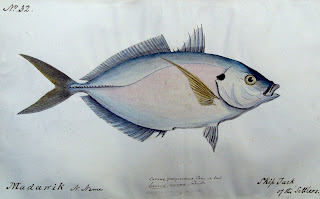Australia’s Indigenous Women Explorers
It’s one of those stories that has been told in bits and pieces but those who’ve had a whiff have followed its trail like a hunter chasin’ a ‘roo.
There’s the official story of colonization on South Australia and Western Australia and then there’s this other story. Rebe Taylor tells the story of Kangaroo Island in her masterful local history “Unearthed: The Aboriginal Tasmanians of Kangaroo Island”. Sarah Hay created a fictional version of the sealer gangs on Middle Island near Esperance in W.A. in her award winning book “Skins”.

Julie Gough got in touch with me a few years ago because she was tracing the path of her ancestor, Woertomenyer from Tasmania. Her story and the other stories told and untold is of the diaspora of indigenous Tasmanian women in the early part of the 19th Century.
As Rebe Taylor points out, the idea of sealers as wild men who abducted these women was at least partially a 19th Century invention and only part of the truth.
Indeed, it’s a fact of Australia’s colonial history that Tasmanian indigenous women were present with their sealer men at the first settlements of South Australia and Western Australia, at Kangaroo Island and King George’s Sound respectively. Woertomenyer who was present at King George’s Sound in 1826 eventually travelled on to Mauritius, Sydney and back to Tasmania. Other’s like Towser and Eliza Gamble settled near Albany and have descendants in wadjila and Noongar communities.
Julie Gough will be in Albany on August 24th where she will join others for an informal discussion and conversation, “Sealing days in Southern Seas: Aboriginal and non-Aboriginal Stories and History of those waters”. Location: Albany Public Library, time: 10.00 am.
Read more!/permanent link
There’s the official story of colonization on South Australia and Western Australia and then there’s this other story. Rebe Taylor tells the story of Kangaroo Island in her masterful local history “Unearthed: The Aboriginal Tasmanians of Kangaroo Island”. Sarah Hay created a fictional version of the sealer gangs on Middle Island near Esperance in W.A. in her award winning book “Skins”.

Julie Gough got in touch with me a few years ago because she was tracing the path of her ancestor, Woertomenyer from Tasmania. Her story and the other stories told and untold is of the diaspora of indigenous Tasmanian women in the early part of the 19th Century.
“It was a fact of Tasmanian Aboriginal culture that the men seldom learnt to swim: when they needed to cross a body of water, they were often ferried on rafts by the women, who were proficient swimmers. The Aboriginal men were therefore of limited use as labourers to the sealers, but the women proved to be invaluable” Terry Crowley, “Tasmanian Aboriginal Culture”, in Language and Culture of Aboriginal Australia, eds. Michael Walsh & Colin Yallop, Aboriginal Studies Press, Canberra, 1993 p. 58
As Rebe Taylor points out, the idea of sealers as wild men who abducted these women was at least partially a 19th Century invention and only part of the truth.
Indeed, it’s a fact of Australia’s colonial history that Tasmanian indigenous women were present with their sealer men at the first settlements of South Australia and Western Australia, at Kangaroo Island and King George’s Sound respectively. Woertomenyer who was present at King George’s Sound in 1826 eventually travelled on to Mauritius, Sydney and back to Tasmania. Other’s like Towser and Eliza Gamble settled near Albany and have descendants in wadjila and Noongar communities.
Julie Gough will be in Albany on August 24th where she will join others for an informal discussion and conversation, “Sealing days in Southern Seas: Aboriginal and non-Aboriginal Stories and History of those waters”. Location: Albany Public Library, time: 10.00 am.
Read more!/permanent link

